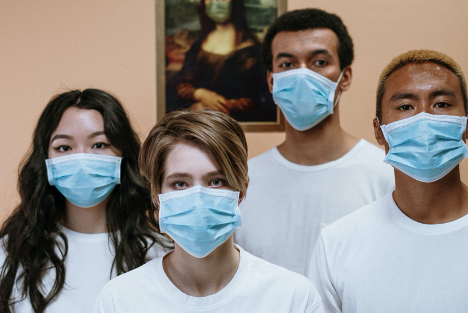The masks are meant to protect us from the corona virus. They save lives. But they also have their limits in terms of protection and their drawbacks (thermal discomfort, respiratory resistance), especially in case of prolonged wear.
It is intended to protect the wearer from both in halation of droplets and airborne particles, which could contain infectious agents. Wearing this type of mask is more restrictive (thermal discomfort, respiratory resistance) than that of a surgical mask.
Table of Contents
Consequences of prolonged mask wear
It is an unexpected consequence of the corona virus. Doctors in Wuhan, the epicenter of the epidemic, have their faces ravaged by wearing masks to protect themselves from hospital patients. Wearing protection for a long time facilitates the appearance of blisters, sores and crusts. This is evidenced by the many photos posted on Chinese social networks.
Respiratory resistance and health effects
Carbon dioxide, or carbon dioxide, is not considered in French law as a pollutant. However, if we take the definition of what pollution is (article L220-2 of the Environmental Code), it is clear that CO2 has its characteristics. Here are the face masks with filters.
Air today contains around 0.04% CO2. From a certain concentration in the air, this gas is dangerous or even fatal. The exposure limit value is 3% over a period of 15 minutes. This value should never be exceeded. Beyond that, the effects on health are all the more serious as the CO2 content increases. Thus, at 2% CO2 in the air, the respiratory amplitude
increases. At 4%, the respiratory rate accelerates. At 10%, visual disturbances, tremors and sweating may appear. At 15%, it’s sudden loss of consciousness. At 25%, respiratory arrest results in death.
Consequence of respiratory failure is poor oxygenation of the Blood, it manifests itself in shortness of breath, difficulty in breathing and great fatigue.
Difference hypoxia and hypoxemia
Although the two terms are often used interchangeably, they refer to two different situations. “Hypoxemia occurs when the partial pressure of oxygen in the blood (PaO2) is below normal (the normal value is between 80 and 100 mm Hg). Uncorrected hypoxemia leads to hypoxia »
Hypoxia: what are the signs?
Hypoxia is a medical term used to refer to a lack of oxygen supply to the tissues of the body. Hypoxia requires adequate medical management to prevent serious complications from occurring.

Definition
The oxygen supply to the human body is ensured by breathing. The oxygen breathed in passes through the lungs where it passes into the bloodstream attaching to hemoglobin in the red blood cells, which carries oxygen to the tissues. In this context, hypoxia refers to a decrease in the amount of oxygen supplied to the organs by the blood. “It is a consequence of hypoxemia, which is the reduction in the quantity of oxygen transported by red blood cells in the blood, specifies Dr. Nicolas Devos, an anesthesiologist. The oxygenation of the organs and tissues is then insufficient, and it can result in a suffering of the cells constituting the affected organs. ”
Depending on their origin, we can speak in particular:
- Tissue hypoxia, which refers to an insufficient supply of oxygen compared to the needs of the body’s tissues. Tissue hypoxia is not seen directly, we see the consequences when the pressure ulcer appears.
- Cerebral hypoxia is a form of hypoxia (a reduced supply of oxygen), specifically involving the brain. When the brain is completely deprived of oxygen, the term used is rather cerebral anoxia.
Causes
The causes of hypoxia can be of three types:
- decreased oxygen supply (altitude hypoxia for example)
- Failure of respiratory function (pulmonary infection, chest trauma etc.)
- decreased oxygen transport in the direction by red blood cells (disease of red blood cells such as thalassemia for example or much more simply anemia)
Symptoms
Symptoms of hypoxia are usually:
- tachycardia: best clinical sign of hypoxia
- hyperventilation by increased ventilatory work
- cyanosis: the skin takes on a bluish tint
- syncope: Sudden or brief complete loss of consciousness (up to about 30 minutes)
Severe hypoxia can plunge a person into a coma or even lead to death if it is not effectively managed by cardiac arrest.
Respiratory failure results from poor oxygenation of the blood, and manifests itself in shortness of breath, difficulty in breathing and great fatigue. Respiratory failure therefore corresponds to an inability of the respiratory system to supply sufficient oxygen and to properly eliminate carbon dioxide.

